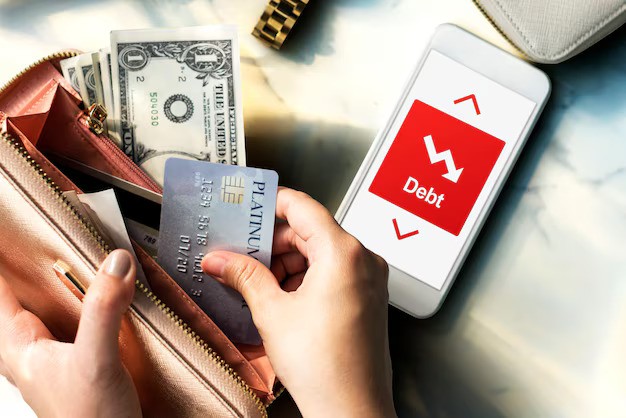Unmasking PPI Refund: Claim Your Money Back

Did you know that millions of people across the UK have been mis-sold Payment Protection Insurance (PPI) without even realising it? If you’re one of them, you could be owed a significant refund. Many banks and financial institutions have been found guilty of mis-selling PPI alongside loans, credit cards, and mortgages, often without customers’ explicit consent or understanding.
Figuring the PPI refund process might seem daunting, but it’s easier than you think. With the right information and guidance, you can reclaim what’s rightfully yours. In this article, we’ll break down the essentials of PPI refunds, helping you understand if you’re eligible and how to take the first steps towards your claim. Don’t let your hard-earned money slip away—read on to find out how you can get it back.
Understanding PPI Refunds
Payment Protection Insurance (PPI) refunds aim to return the money you’ve been wrongfully charged. PPI covers loan repayments if you’re unable to pay, but many people didn’t need it or know they had it. Does this sound familiar? If yes, you might qualify for a refund.
First, check if you were sold PPI without knowing. Your bank or lender might have added it to your loan or credit card. They often did this without clear consent, making many policies invalid.
Next, gather your documents. Find statements and agreements where PPI might appear. Look for terms like “insurance” or “premium”. If unsure, contact your lender; they should provide these details.
Then, consider how you were sold PPI. Did your bank explain it properly? If not, this mis-selling means you could claim a refund. Banks sometimes implied PPI was mandatory; in reality, it wasn’t.
To claim, contact your lender directly. State that you believe PPI was mis-sold and request a refund. They’ll ask for details about how it was presented. Be clear and specific; this strengthens your claim.
If your claim gets rejected, don’t worry. You can take your case to the Financial Ombudsman Service (FOS). They review the claim independently and might overrule your lender’s decision. It’s another chance to get your money back.
Lastly, look out for claim companies offering help. They often charge fees for something you can do yourself for free. A straightforward claim process doesn’t require a third-party service.
Understanding PPI refunds empowers you to reclaim what’s yours. So, why let your hard-earned money go to waste? You deserve it back if it was wrongly taken.
The History Of PPI
Payment Protection Insurance (PPI) has a long history in the UK, beginning in the 1990s. It’s helpful to know its background to understand how the mis-selling scandal unfolded.
What Is PPI?
PPI was designed to cover repayments on loans, credit cards, or mortgages if a borrower couldn’t make them due to illness, accident, or unemployment. It seemed beneficial, but it often came with hidden clauses and extra costs. Initially, banks and lenders heavily promoted it, suggesting it was essential for securing credit.
Mis-Selling Of PPI
By the early 2000s, the mis-selling of PPI had become rampant, affecting millions. PPI was often sold without customers’ knowledge or under false pretenses. Sales staff might’ve implied it was mandatory for loan approval or failed to explain who would be excluded from coverage, such as those with pre-existing conditions. Consequently, many found themselves paying for insurance they couldn’t use. In 2011, the Financial Services Authority (FSA) mandated banks to refund mis-sold PPI, leading to a massive wave of claims and refunds.
Eligibility For PPI Refunds
Curious if you might be eligible for a PPI refund You aren’t alone Refunds have brought relief to millions Here’s what you need to know
Common Criteria
You could qualify for a PPI refund if you were mis-sold a policy Many were sold PPI without knowing If you were told insurance was compulsory to get a loan, that’s a red flag Policies sold to self-employed, unemployed, or retired individuals may also be suspect Banks hid terms making it impossible for some to claim Processing refunds usually starts by checking old paperwork
How To Claim A PPI Refund
Claiming a PPI refund can feel like figuring a maze, but with the right steps, it’s manageable. Taking control of the process yourself or getting help from a claims company both offer viable paths.
DIY Approach
Start by reviewing your old paperwork and identifying any PPI policies. Contact the lender directly. Clearly state that you’re claiming a refund for mis-sold PPI. Use templates from the Financial Ombudsman Service if needed. Keep copies of all correspondence. This approach saves you from paying fees.
Using A Claims Company
Claims companies can handle the process for you, but they charge a fee, often a percentage of your refund. Research thoroughly to find a reputable firm. They’ll collect details from you, submit the claim, and handle negotiations. This route might be better if you lack time or feel overwhelmed by the paperwork.
The Process And Timeline
PPI refunds have a structured process and a set timeline. Understanding both can help you figure out the steps and manage your expectations.
Step-By-Step Guide
First, gather your financial records. Old loan statements, credit card statements, and insurance documents are key materials. Next, identify the PPI policy. Check these documents for any reference to PPI or similar insurance products. Third, contact the lender. Prepare a detailed letter or call to inquire about mis-sold PPI. Lastly, await a response. The lender must acknowledge receipt within eight weeks. If unsatisfied, escalate to the Financial Ombudsman Service.
Typical Timeframes
How long does it take for a PPI claim? The initial acknowledgment by the lender should come within two weeks. Investigations might take up to eight weeks. If you escalate to the Financial Ombudsman Service, expect a further six to twelve months for resolution. Patience is key. While waiting, continue monitoring for updates. Financial institutions handle numerous claims, which can lead to processing delays.
Potential Challenges And Pitfalls
Figuring the PPI refund process can be complex. Identifying challenges and recognising pitfalls is crucial for a smoother experience.
Common Issues
You might face several issues during a PPI refund claim. Lenders may dispute your claim, arguing that the insurance was not mis-sold. You could also encounter difficulties in gathering old financial records, especially if the policy was bought decades ago. Claims might be rejected if forms are incomplete or if supporting documents are missing. Patience is key as PPI claims often take months for resolution.
How To Avoid Scams
Scammers often prey on those seeking PPI refunds. Be cautious if a company promises a guaranteed refund for an upfront fee. Authentic advisors won’t ask for such payments. It’s safer to contact your lender directly or use a reputable service. Always verify the company’s legitimacy by checking online reviews and government registers. Suspicious emails or calls should be ignored, and personal information mustn’t be shared without verification.
Last Thoughts
Figuring the PPI refund process can be complex but understanding your rights and taking informed steps can make a significant difference. Always verify the legitimacy of any service offering to help with your claim and avoid companies requesting upfront fees. Directly contacting your lender remains the safest and most cost-effective approach. Patience is key as the resolution process can be lengthy. By staying vigilant and informed you can successfully reclaim what you’re owed and avoid potential pitfalls.









